Backyard gazebos have evolved far beyond quaint garden shelters—today they double as outdoor living rooms, energy-generating canopies, poolside lounges, and even kitchens. Design professionals highlight three big themes for 2025: multi-functionality, eco-conscious materials, and clever tech that stretches a structure’s usefulness from sunrise coffee to midnight stargazing. Pairing the right shape, roof, lighting, and furnishings with your yard’s scale lets a gazebo anchor gatherings, tame harsh weather, and boost property value. The 20 ideas below translate those trends into practical projects—each delivers a fresh angle, clear benefits, and simple tips so you can pick (or mix) what suits your space and budget.
1. Classic Cedar Gazebo With Timeless Charm

A warm cedar gazebo instantly cultivates a welcoming focal point while resisting rot and insects naturally. Start by setting posts on concrete footers for longevity; then seal boards with a breathable oil every other year. Experts note cedar’s low shrink-warp ratio keeps roofs steady in humid climates, reducing maintenance compared with vinyl sheathing. Add a vented cupola to release hot air and hang planters from the rafters to soften corners—strictly limit weight to 25 lb per beam to avoid sag. Finish the floor with brick pavers in a herringbone pattern so rain drains between joints and the gazebo stays splash-free.
2. Sleek Metal-Frame Gazebo for a Modern Look

Unlike wood, powder-coated aluminum resists termites and never needs staining, making a metal gazebo a crisp match for contemporary homes. Choose dark charcoal posts and adjustable louvered roof panels to regulate midday glare; most kits include pre-drilled holes so two people can assemble frames in an afternoon. Run low-voltage LED strip lights along the ridge beam before you attach roof sheets—hidden wiring keeps lines clean and provides soft uplighting at night. Conceal legs with tall ornamental grasses planted in narrow beds just outside the perimeter for an organic touch that offsets the industrial finish.
3. Power-Generating Solar Roof Gazebo
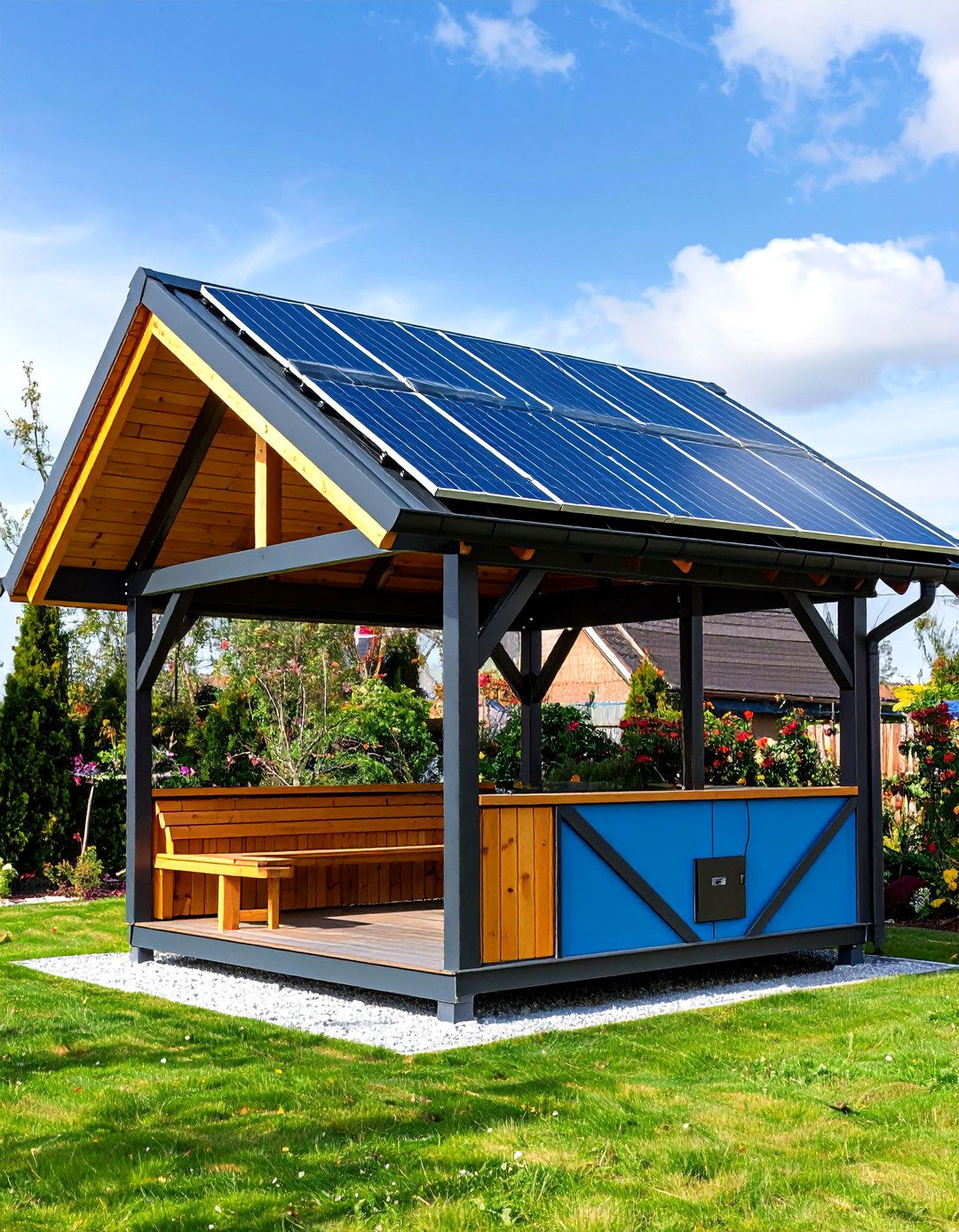
Surprisingly, a gazebo can slice power bills: modular photovoltaic panels now mount directly to steel or cedar rafters and supply up to 4.3 kW—enough to run outdoor refrigerators and string lights. Confirm local code allows detached solar arrays, then orient the gazebo’s ridgeline within 15° of true south for peak yield. Conceal the inverter inside a vented storage bench and include a USB-C outlet at the bar rail so guests can charge devices off-grid. If snow load is a concern, pick bifacial panels with aluminum frames rated for at least 50 lb / ft².
4. Eco-Friendly Bamboo Gazebo With Tropical Flair
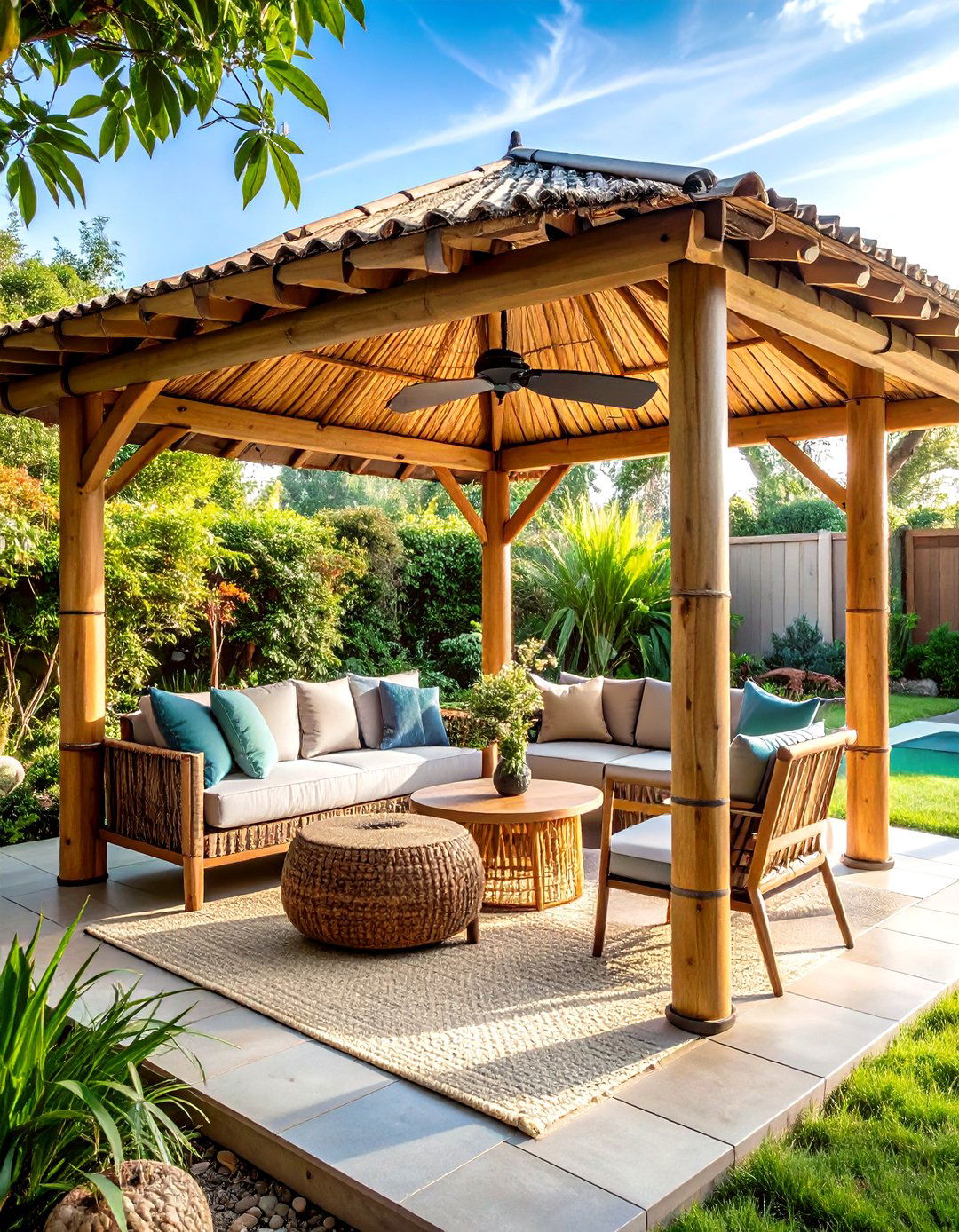
A bamboo gazebo blends visual lightness with sustainability because treated culms regrow within four years and carry higher tensile strength than many hardwoods. Coat posts with a borate preservative before assembly, then lash beams using stainless steel bolts and decorative hemp rope wraps. Slip a thatch or polycarbonate roof over the rafters—transparent sheets let dappled light filter through while shedding monsoon rain. Furnish with rattan stools and a compact ceiling fan (look for outdoor-rated IP44) to keep air moving in humid regions.
5. Outdoor-Kitchen Gazebo for Serious Entertaining
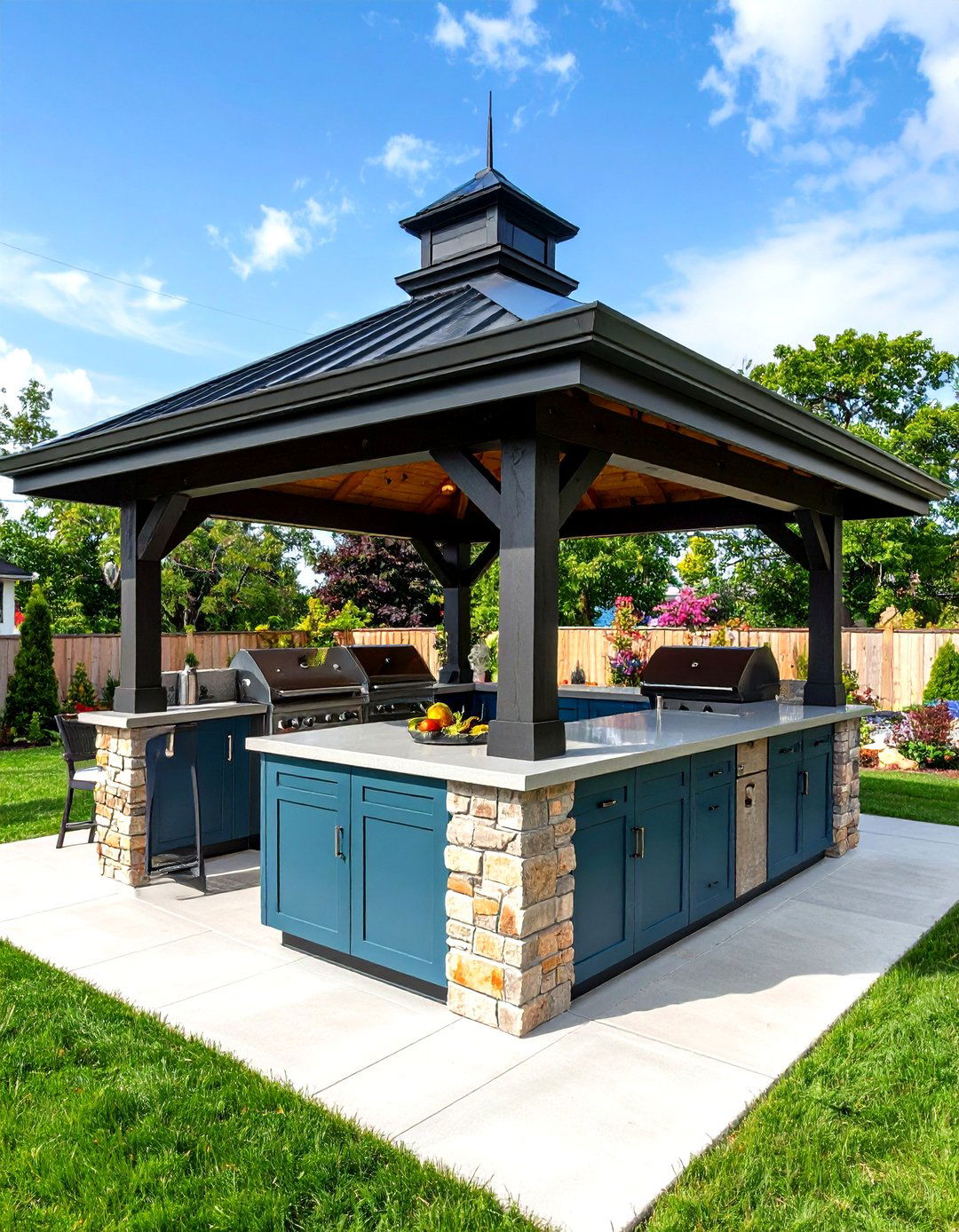
Few upgrades wow dinner guests like a gazebo sheltering a built-in grill, sink, and prep counter. Designers recommend a 12 × 14 ft footprint to clear 3 ft of walkway on all sides of appliances. Vent smoke through a 6-inch stainless chimney that penetrates the roof between rafters; flashing kits simplify sealing. Surround posts with bar-height counters so friends can perch while you cook, and specify sealed-concrete floors for easy grease cleanup. For late-night service, install task lighting under the ridge and dimmable uprights on posts.
6. Fire-Pit Gazebo for Cozy Evenings
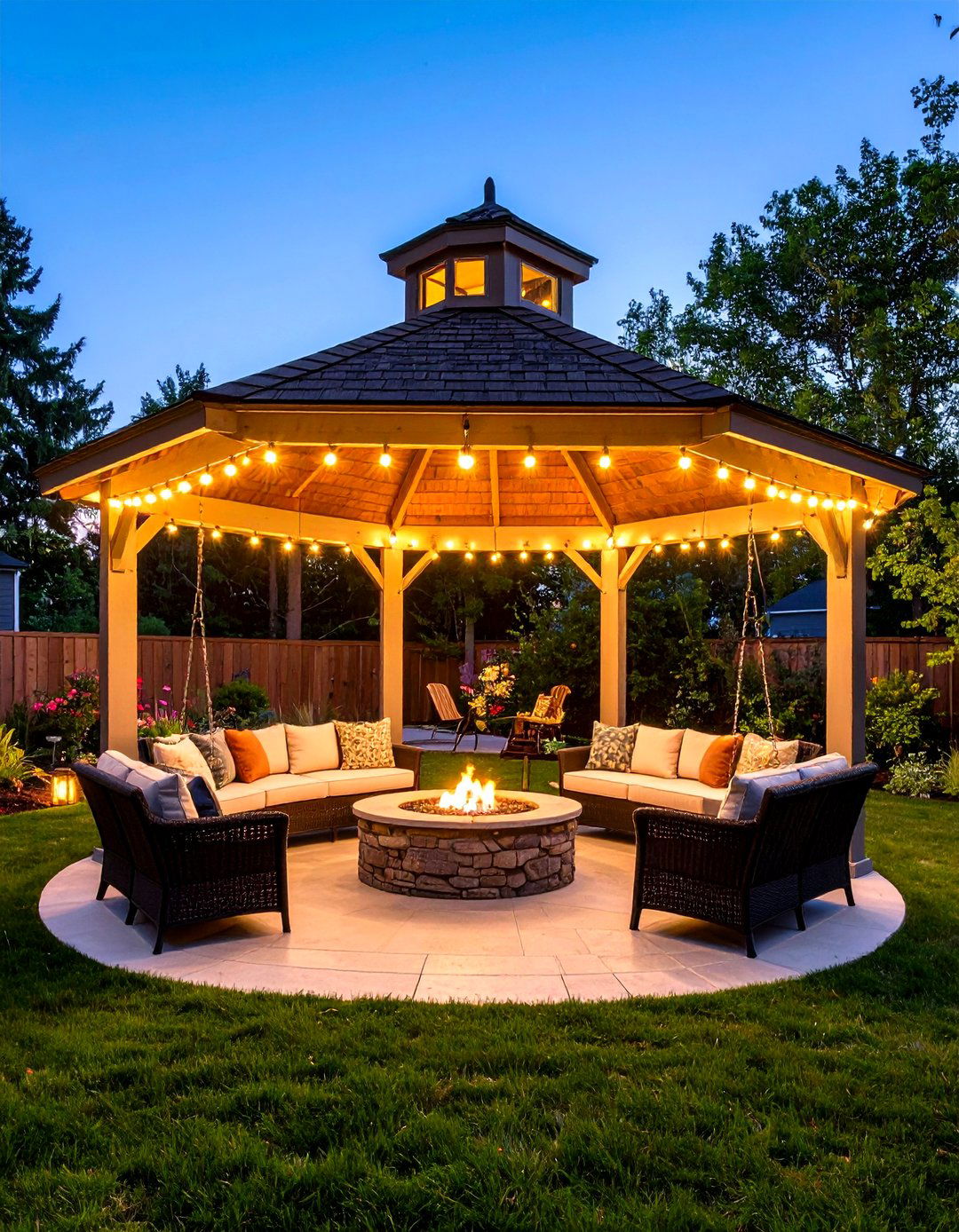
Imagine marshmallows roasting under a vaulted roof while rain taps overhead. Position a gas or smokeless wood fire bowl at least 36 inches from any post and choose a vented metal cap or mesh spark guard to tame embers. Integrate built-in bench swings around the perimeter—swiveling arms make seat depth adjustable so knees clear the pit rim comfortably. Use flame-retardant Sunbrella cushions and keep a CO detector near the ridge if you opt for propane. String Edison bulbs along rafters for a golden glow that won’t overpower the flicker of the fire.
7. Pergola-Gazebo Hybrid Draped in Vines
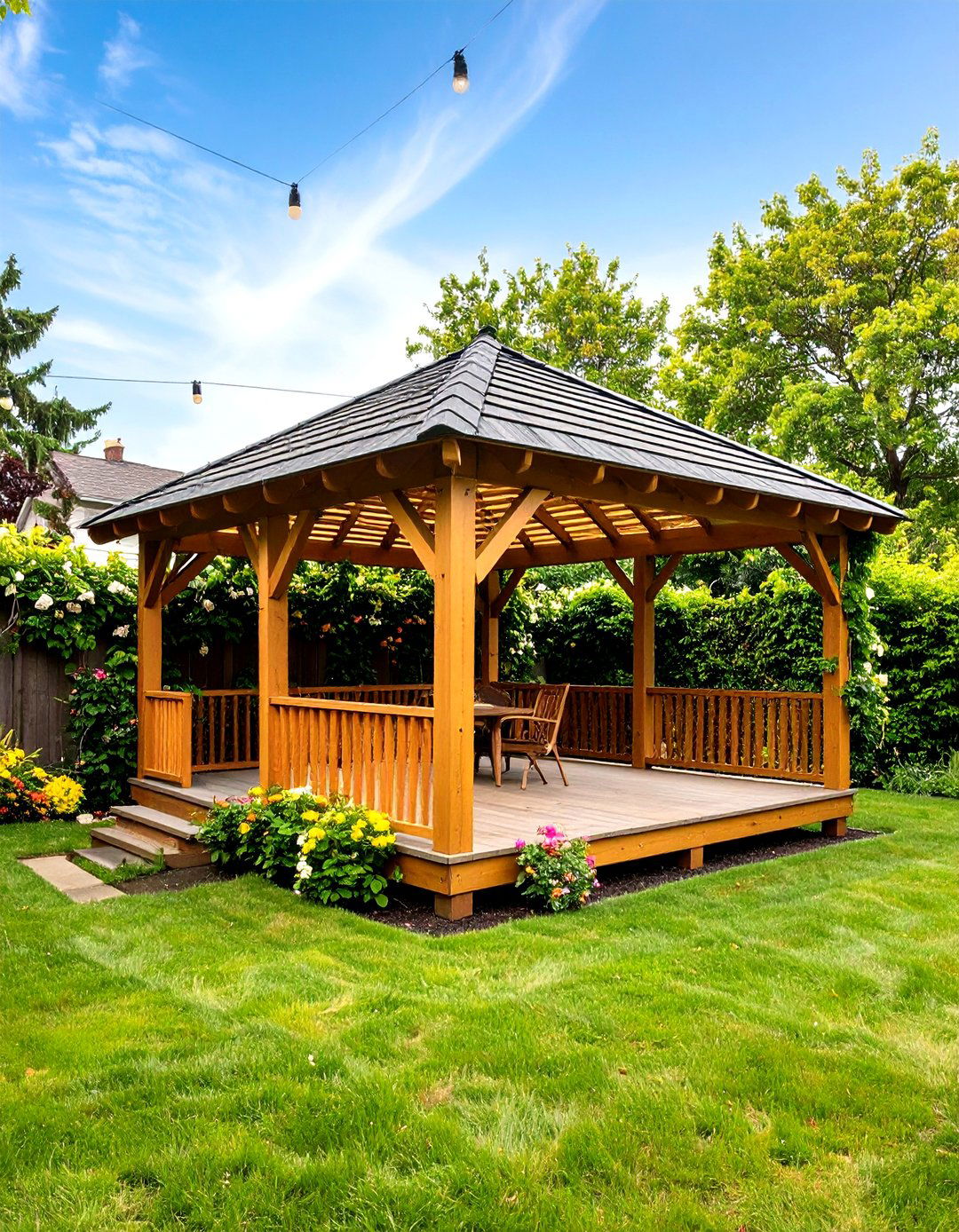
For airy shade that still feels sheltered, swap half of the solid roof panels for open pergola slats and train jasmine or wisteria across tension wires. Yard designers say these hybrids keep footprints light while giving climbing plants a sturdy trellis. Space slats no more than 6 inches apart so foliage eventually weaves a natural canopy. Install a drip-line irrigation hose along the top beam and set a timer to keep vines hydrated without messy overhead watering. Opt for composite beams if you worry about moisture trapped under dense greenery.
8. Compact Pop-Up Gazebo for Small Yards
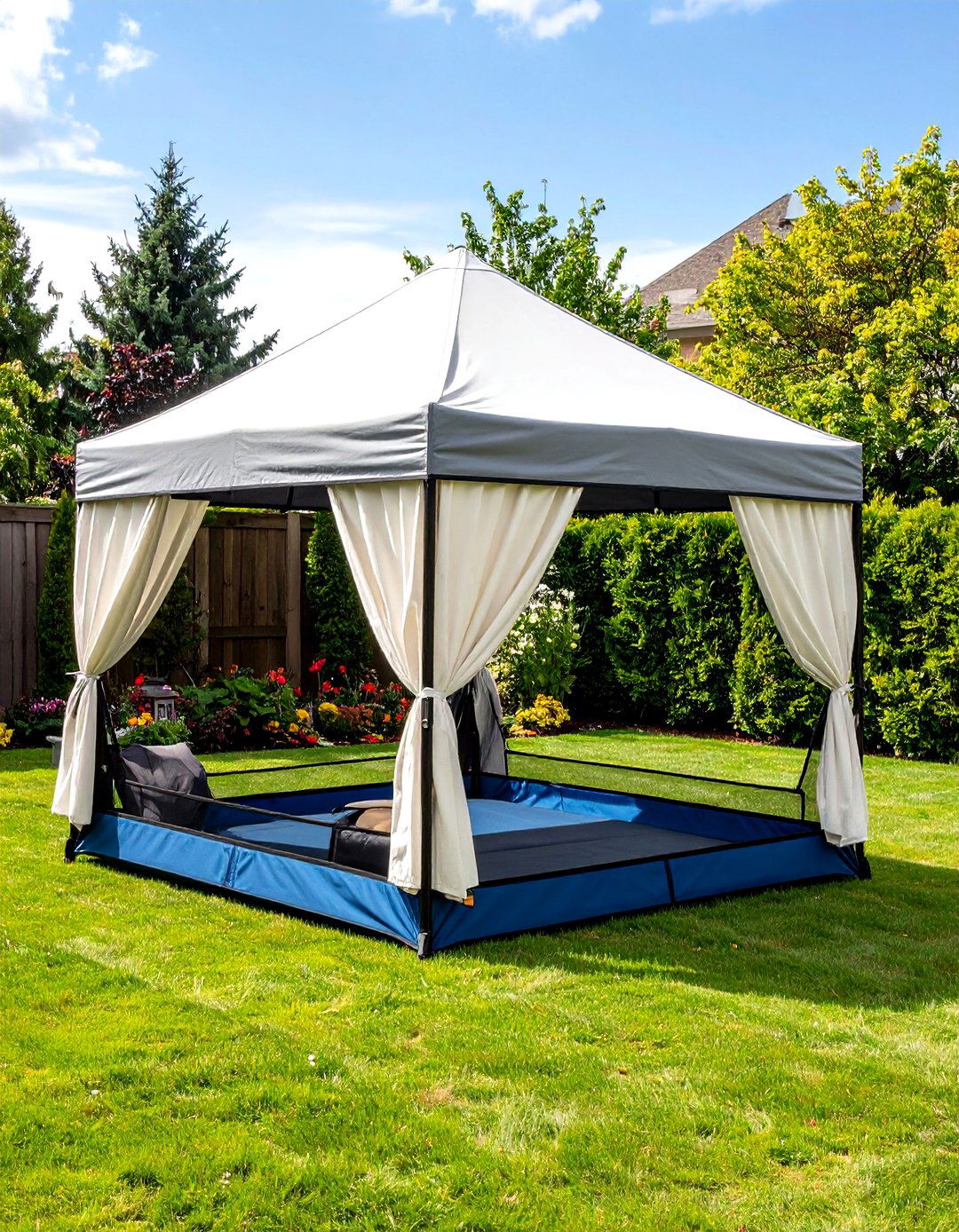
Surprisingly sturdy instant canopies now unfurl in under three minutes and collapse into wheeled bags for winter storage—handy for renters or tight patios. A recent 3 × 3 m model weighs under 20 kg yet withstands summer showers thanks to PU-coated polyester. Anchor each leg with 25 lb sandbags when winds exceed 15 mph and drape detachable privacy curtains when neighbors are close. Because UV fabric blocks 98 % of rays, tuck a toddler’s splash pool underneath so kids stay shaded while playing.
9. Budget-Friendly DIY Gazebo Kit
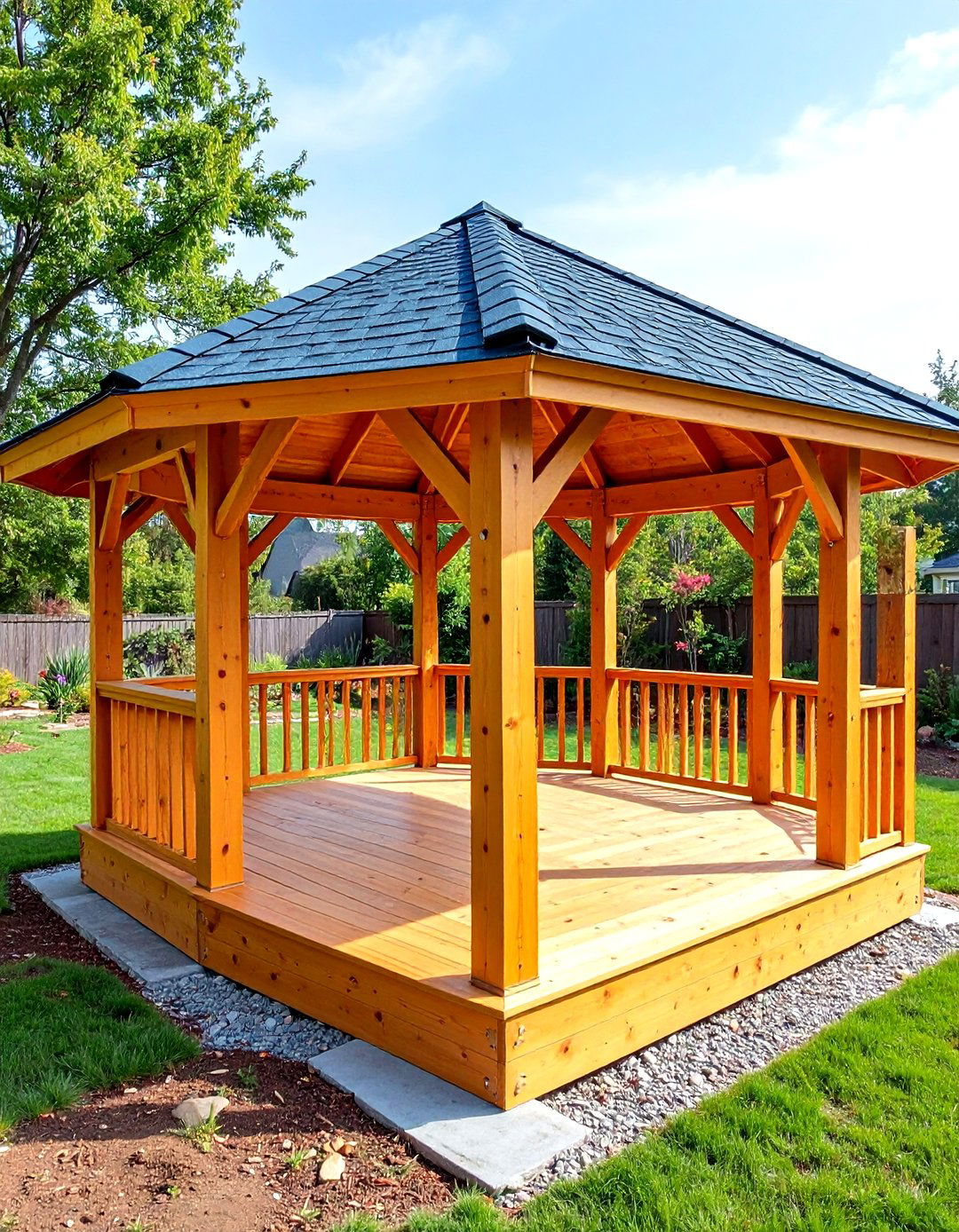
A DIY gazebo kit arrives with pre-cut joists, labeled hardware, and step-by-step guides, slashing labor costs by half. Comparisons show cedar kits under $3 000 assemble in a weekend with two helpers and a cordless impact driver. Lay out beams on sawhorses first to verify angles before lifting walls; a dry-fit catches mis-drilled holes early. Upgrade standard roofing felt to synthetic underlayment for longer leak protection, and run gutter chains at corners so rainfall drains neatly into planters below.
10. Gazebo With Retractable Screens
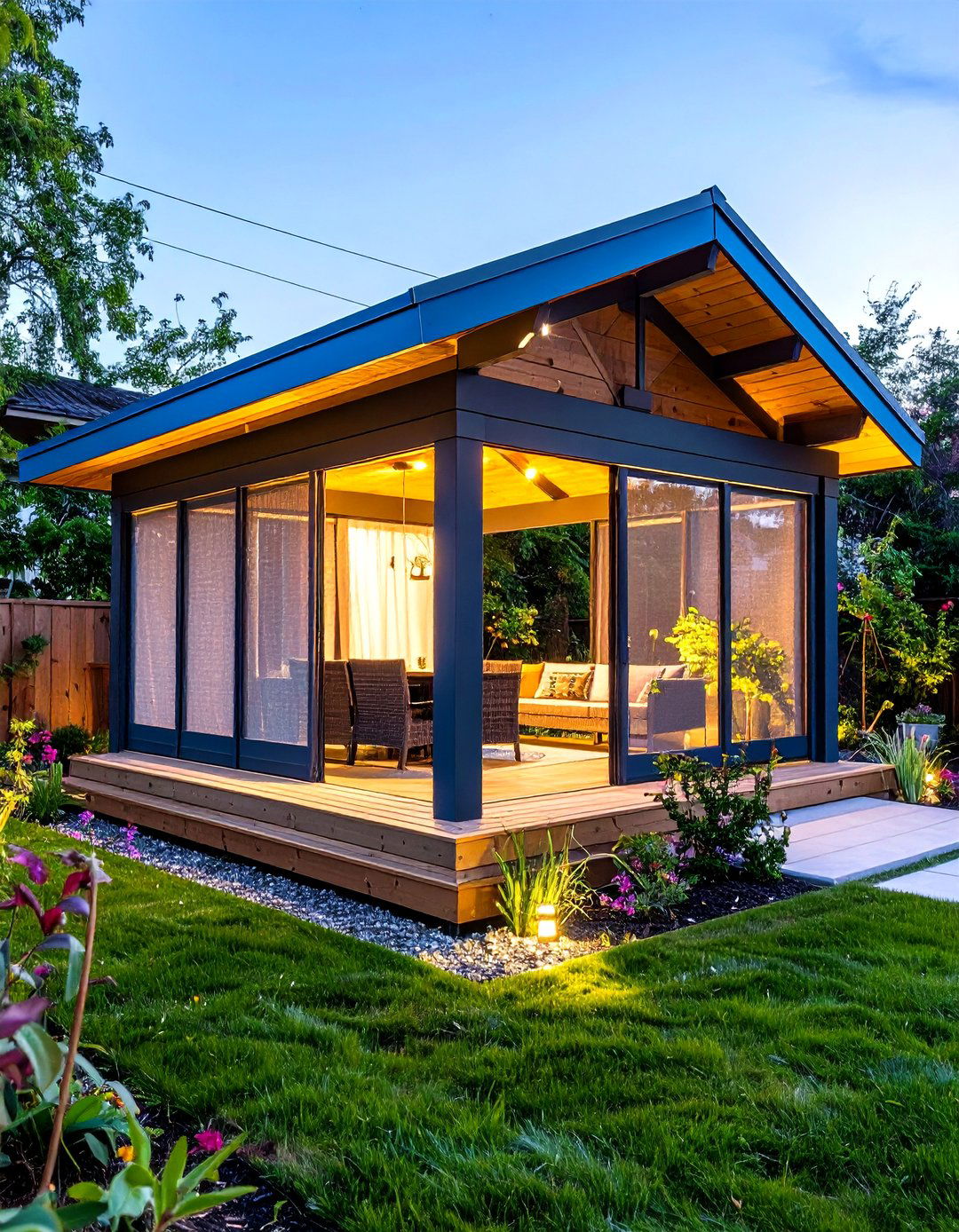
Motorized screens glide down at the touch of a remote, blocking bugs and up to 65 % of solar heat gain—a relief where summer temps soar. Plan separate circuits for the screen motors and overhead lights to prevent breaker trips. Screens priced $20–40 / sq ft often offset cooling costs within three seasons. Choose mesh with a 17 × 20 weave to maintain airflow without sacrificing outward views, and specify powder-coated housings that match the gazebo frame for a seamless look when retracted.
11. Poolside Daybed Gazebo
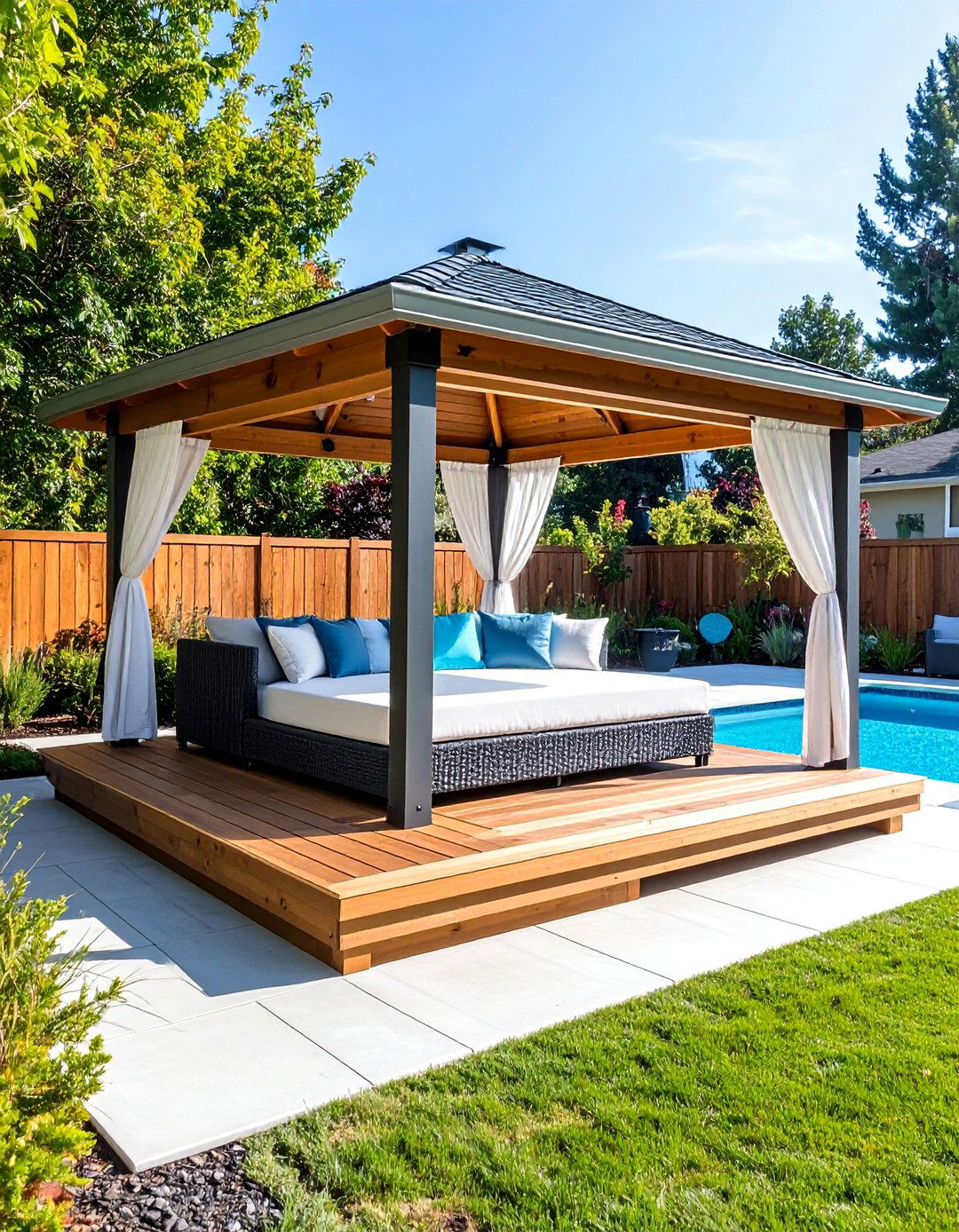
Carve out resort vibes by positioning a gazebo flush with the pool coping and fitting a built-in platform daybed. Designers on lifestyle platforms showcase curtains sewn from mildew-resistant acrylics that glide on stainless tracks to shield swimmers from afternoon glare. Elevate the deck 8 inches so cushions stay splash-free, and install a marine-grade Bluetooth speaker beneath the bed frame for low-profile audio. Use synthetic teak slats underfoot to echo pool decking and resist chlorine.
12. String-Lit Gazebo for Evening Magic
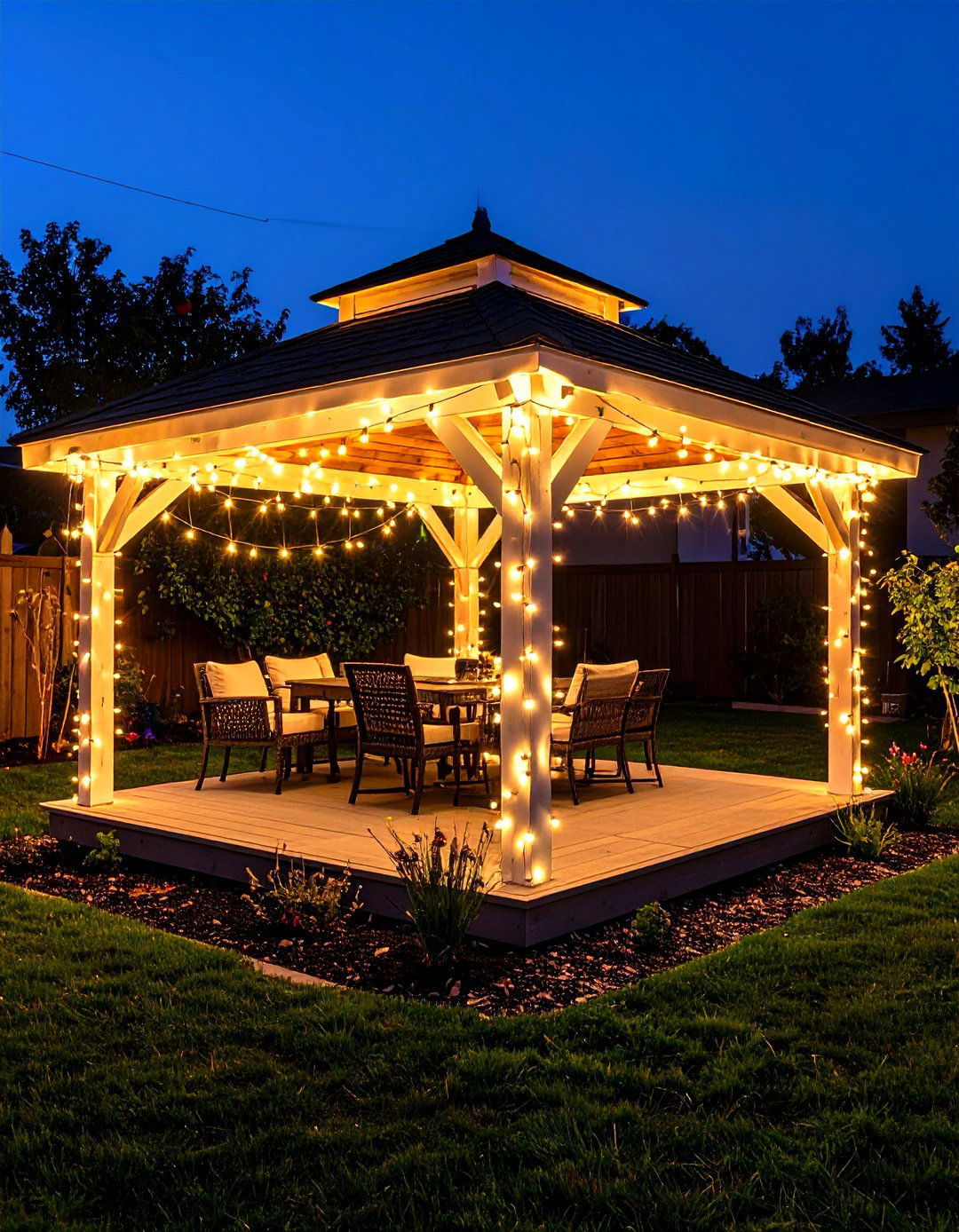
Pergola string lights instantly lift mood; warm-white LEDs rated for outdoor use cost pennies to run and last 20 000 h. Drape bulbs in gentle swag patterns, maintaining at least 7 ft head clearance in traffic zones. To avoid extension-cord clutter, route wiring through PVC conduit secured along rafters before terminating at a smart plug near the ledger board—schedule lights to fade after guests leave. Accent with plug-in lanterns at eye level so faces glow warmly without harsh downlight.
13. Four-Season Gazebo With Infrared Heaters
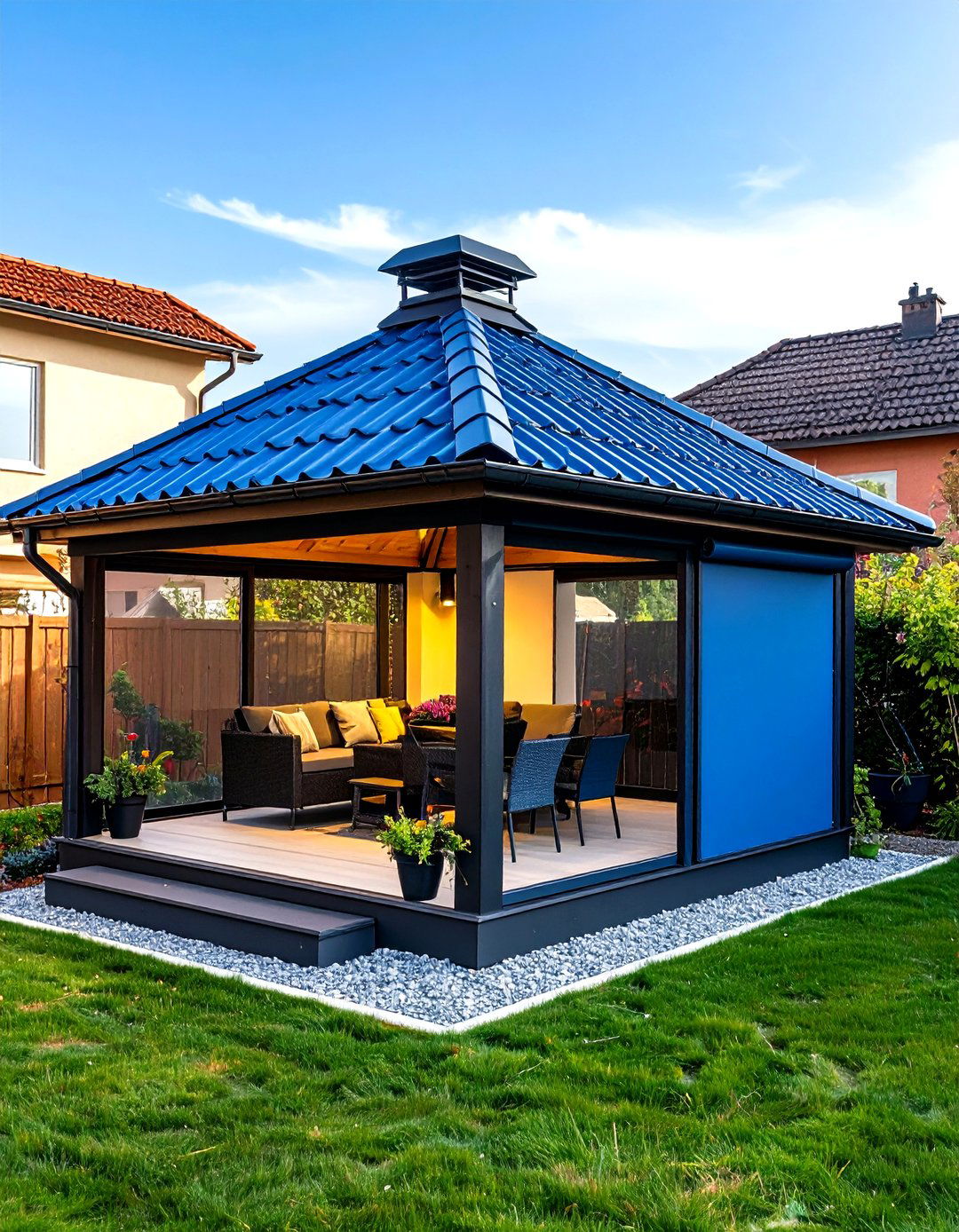
Cover winter gatherings by sheathing roof panels with insulated SIPs (structural insulated panels) and mounting 240-V infrared heaters to the ridge. These emit radiant warmth that wind can’t whisk away, keeping seating 15 °C warmer within minutes. Home-improvement sources suggest pairing clear vinyl roll-down walls for blizzard nights; just crack a screened vent at the peak to prevent condensation. Choose dark powder-coated heaters—they blend into ceiling shadows, preserving the gazebo’s aesthetic when off.
14. Hot-Tub Gazebo Retreat
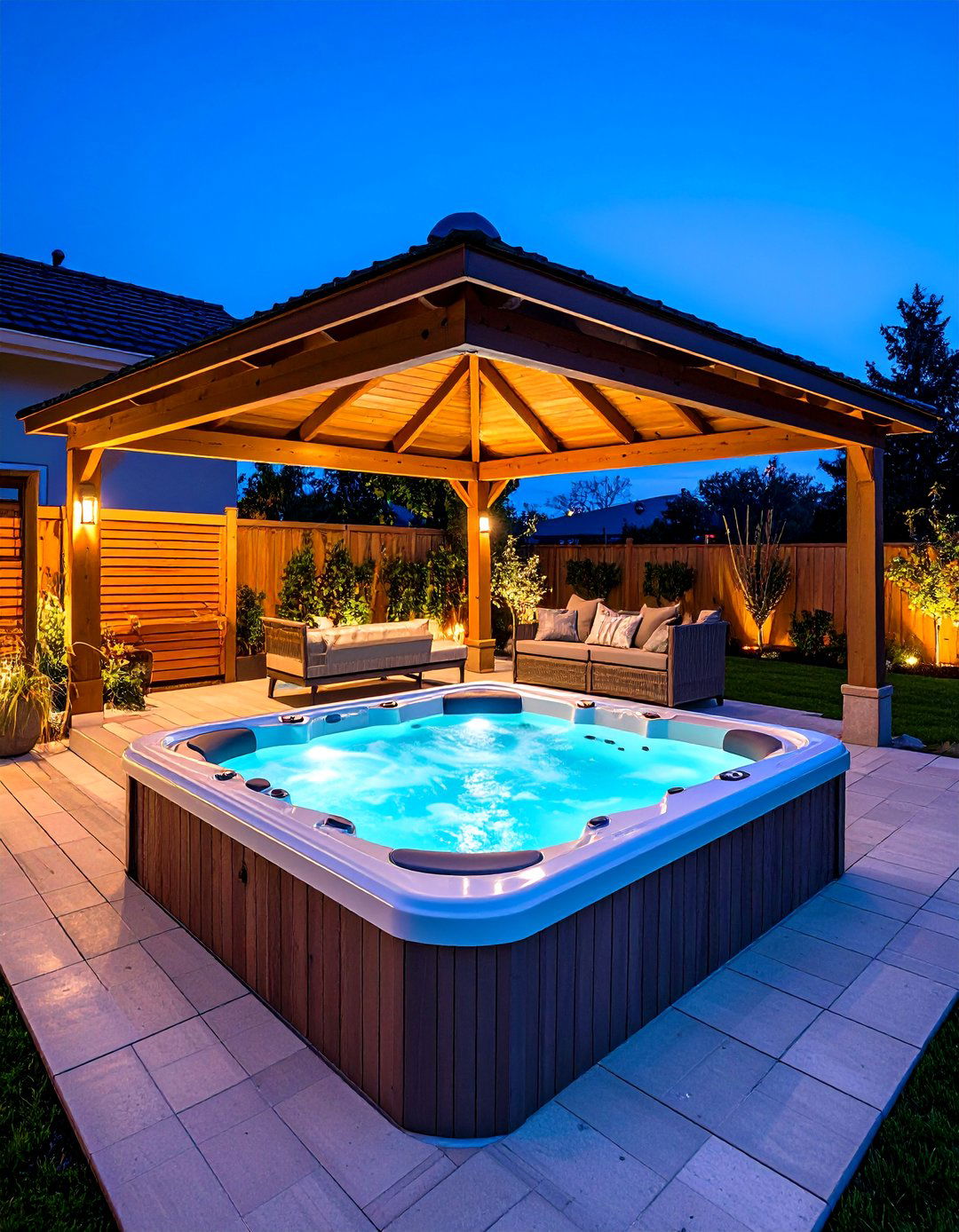
A spa under a gazebo shields bathers from debris while creating a private oasis. Ensure the deck sub-structure supports at least 120 lb / sq ft (water plus occupants), and provide a 36-inch service clearance on one side for pump access. Designers frequently integrate slatted privacy screens at two walls to temper breezes without trapping steam. Add dimmable sconces rated IP65 to avoid glare on water and run an exterior GFCI breaker for the tub’s 220 V line.
15. Multi-Level Deck and Gazebo Combo
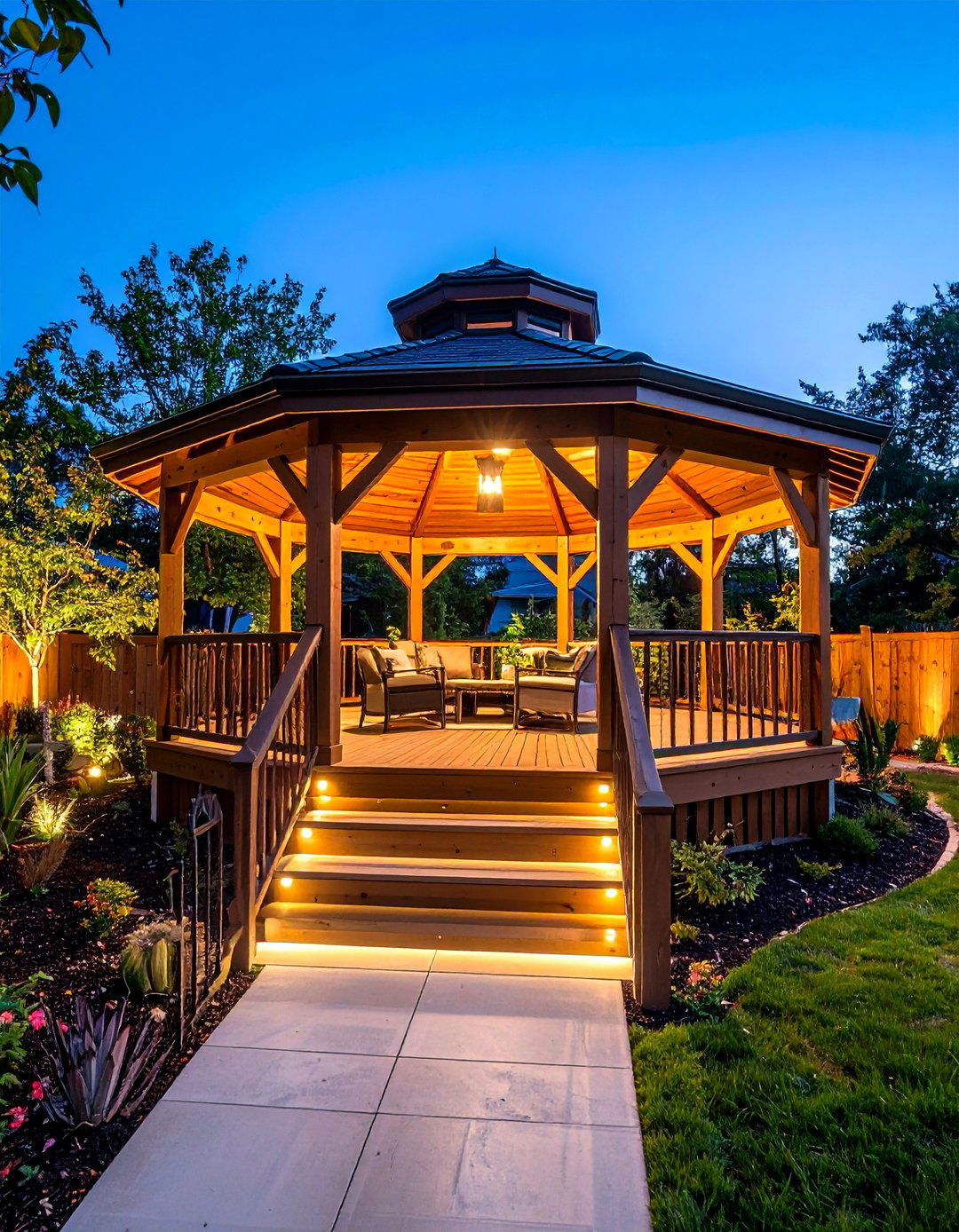
Terracing a gazebo onto a raised deck creates sight-line drama and separates dining from lounging. Frame a 9-ft-diameter gazebo on steel brackets bolted to lower pilings so load transfers straight to footers. Landscape architects recommend 18-inch box steps wrapping two sides for natural flow between levels. Use cable railings to keep views open, and recess low-level LEDs into stair risers for safety after dusk.
16. Meditation or Yoga Gazebo
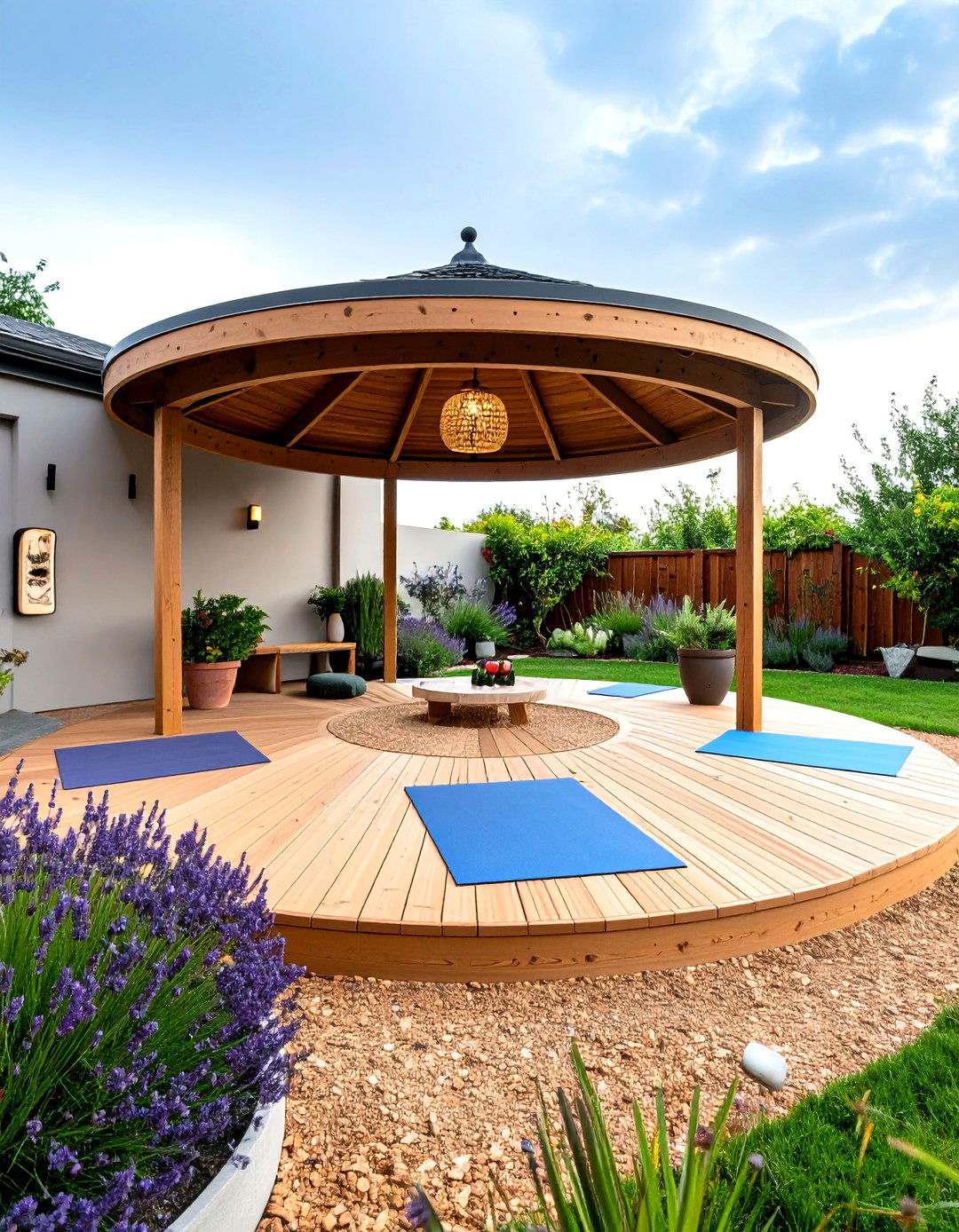
Calming practice spaces flourish in round or octagonal gazebos set away from busy patios. Lay interlocking rubber cork tiles for joint-friendly underfoot support and orient the entry east so sunrise light frames morning stretches. Wellness planners suggest adding wall-mounted planter boxes filled with lavender and lemongrass—scents proven to lower heart rate. Keep décor minimal: a weatherproof cabinet stores mats and blocks, while a battery lantern provides gentle illumination for twilight sessions.
17. Living-Roof Gazebo
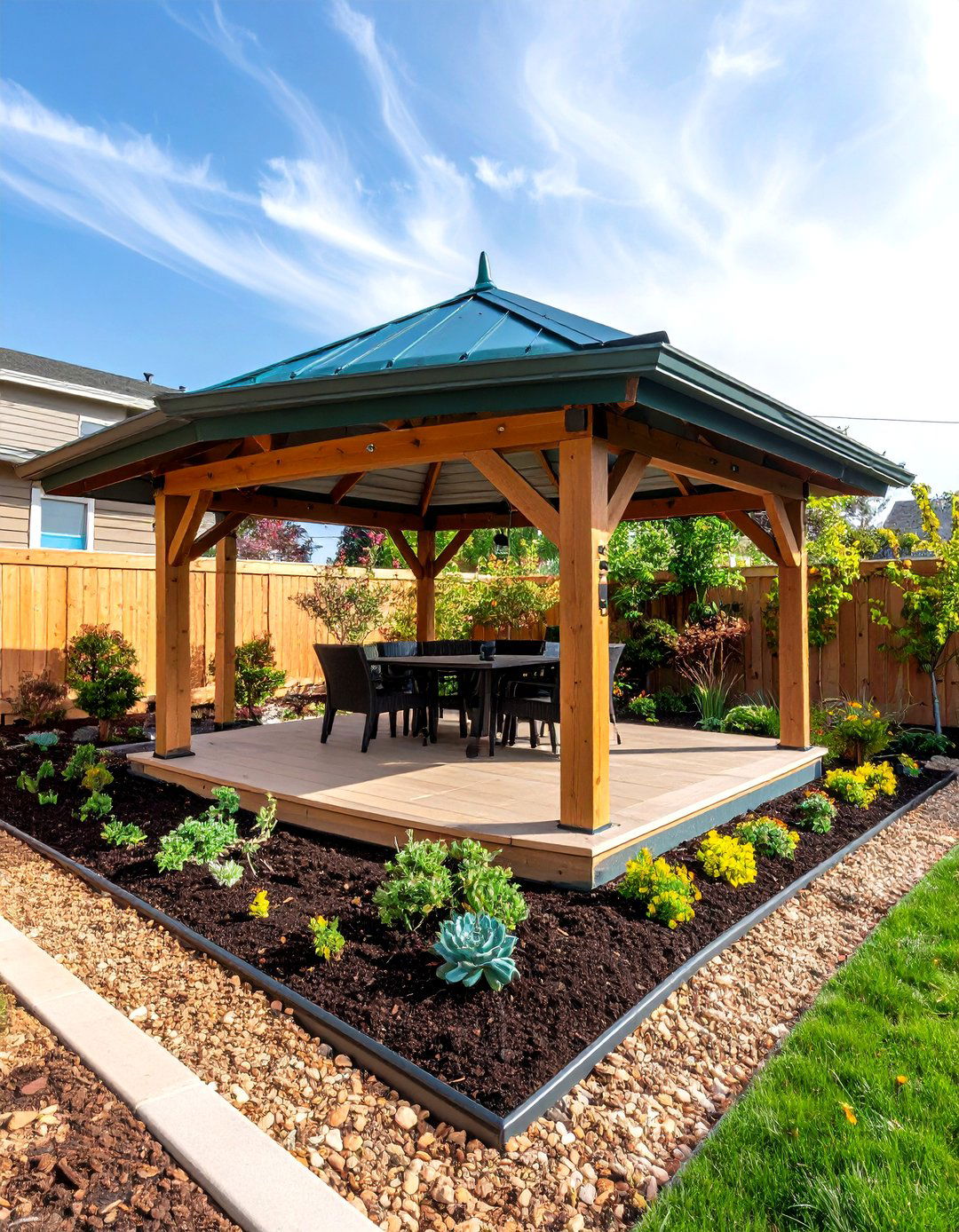
A shallow-pitch roof planted with sedums insulates the structure and blends it into surrounding gardens. Start with a load-rated frame (50 lb / sq ft minimum) and install a waterproof EPDM membrane, drainage mat, and 4 inches of lightweight soil. Green-building guides show sedums thrive in only 3 inches, cutting weight further. Add drip irrigation tied to a soil-moisture sensor so plants survive heatwaves without manual watering. Edge the roof with a 3-inch aluminum retaining trim to keep soil in place during downpours.
18. Rustic Stone-and-Timber Gazebo
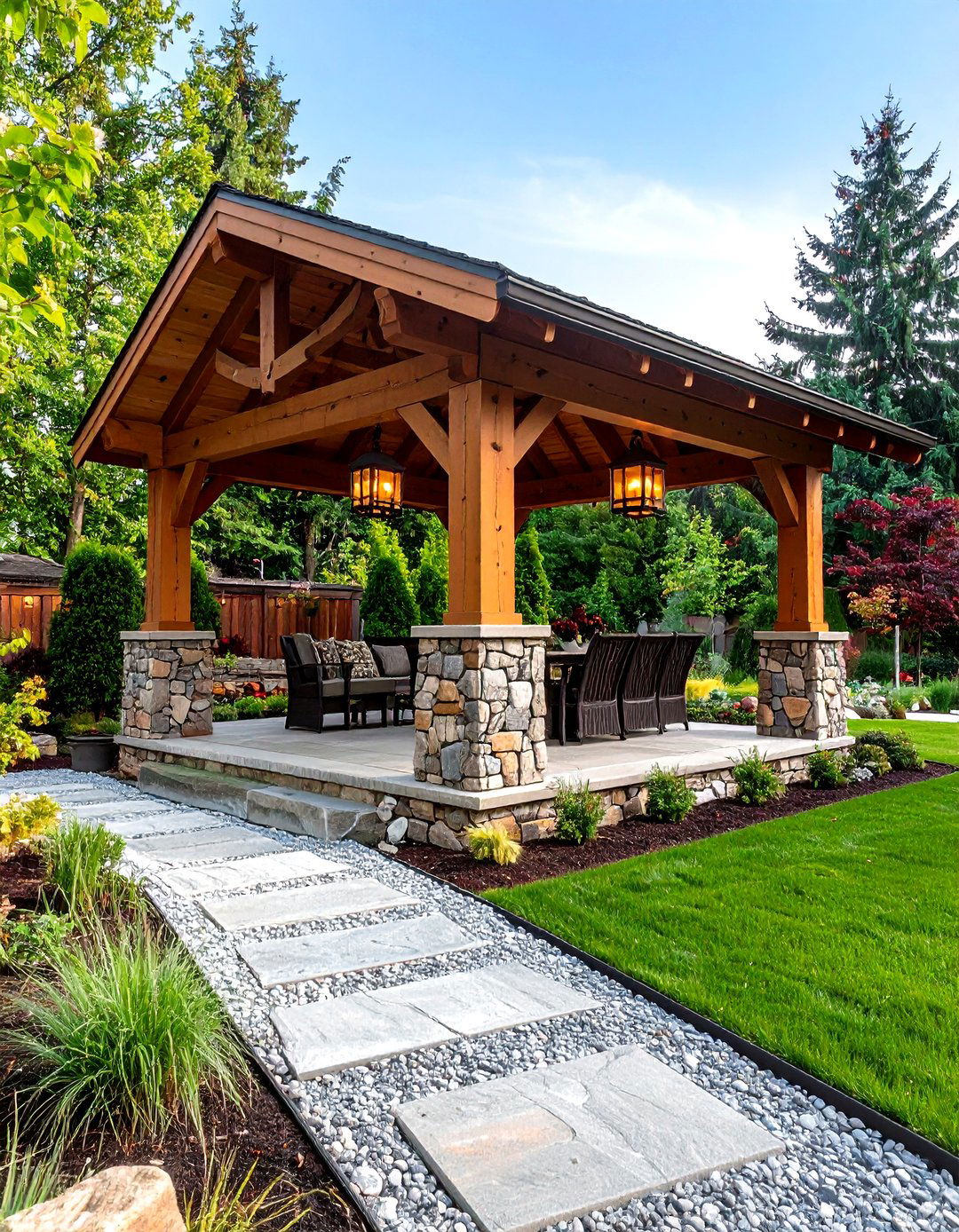
For a lodge vibe, pair chunky cedar posts with stacked-stone knee walls. Masonry absorbs heat by day, releasing it at night for naturally warmer seating. Use galvanized post bases set into poured piers before mortaring stone, ensuring timber never wicks ground moisture. Accent the ceiling with exposed king-post trusses and lantern-style pendants chandeliers to echo historic park pavilions. Finish walkways with compacted gravel for a crunchy, campsite feel that drains rainwater quickly.
19. Gazebo Playhouse or Outdoor Classroom

Transform a modest gazebo into a child’s sheltered study by adding rail screens to keep toys contained and a fold-down chalkboard wall. Parenting blogs highlight that shaded open-air spaces encourage longer outdoor reading sessions and reduce screen time. Lay washable indoor-outdoor rugs and store art supplies in lidded bins tucked beneath benches. For safety, install tamper-resistant GFCI outlets only under adult supervision and cap roof edges with gutter guards so leaves don’t clog.
20. Smart-Tech Gazebo With App Control
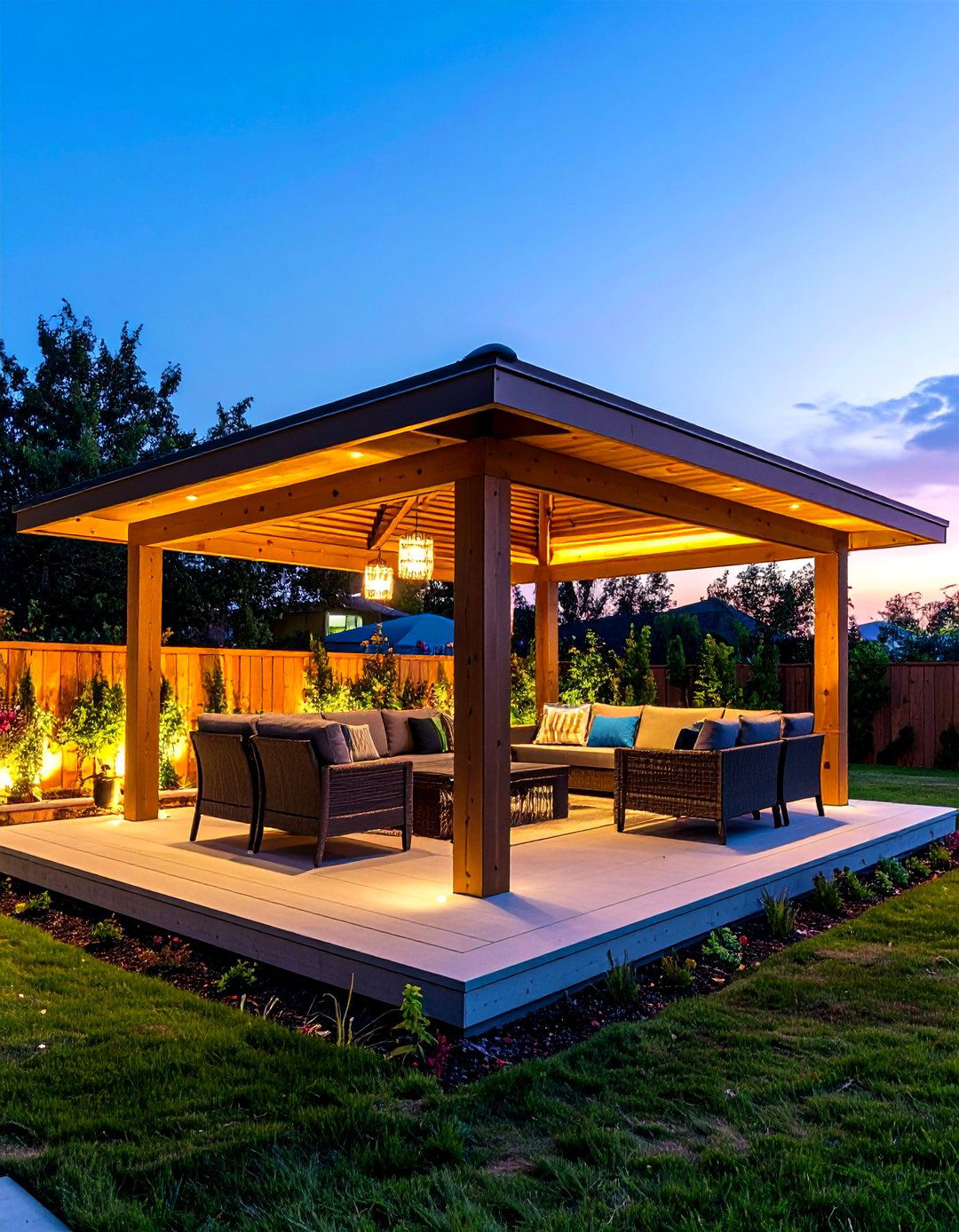
Finally, integrate the latest conveniences: Wi-Fi mesh nodes conceal in the ridge, BLE temperature sensors trigger fans, and voice-activated RGB cove lights shift mood from brunch to movie night. Modern gazebo guides forecast high demand for sensors that close louvers automatically at the first hint of rain, protecting furniture without owner intervention. Pair smart plugs with energy-monitoring to see how many watts your movie projector or blender actually draws, then tweak solar capacity accordingly. Run all low-voltage wiring through flexible conduit so future upgrades require only a cable pull.
Conclusion:
Great backyard living starts with choosing a gazebo that suits how you relax, cook, or entertain—whether that’s a cedar classic begging for Sunday brunch, a solar powerhouse that cuts utility bills, or a retractable-screen hideaway that keeps mosquitoes at bay. The 20 ideas above showcase materials from bamboo to steel, footprints from pop-up to multi-level, and features as varied as hot tubs, fire pits, smart lighting, and living roofs. Use them as standalone inspirations or blend their best parts to craft a gazebo that meets your climate, budget, and lifestyle while adding year-round value and beauty to your outdoor haven.


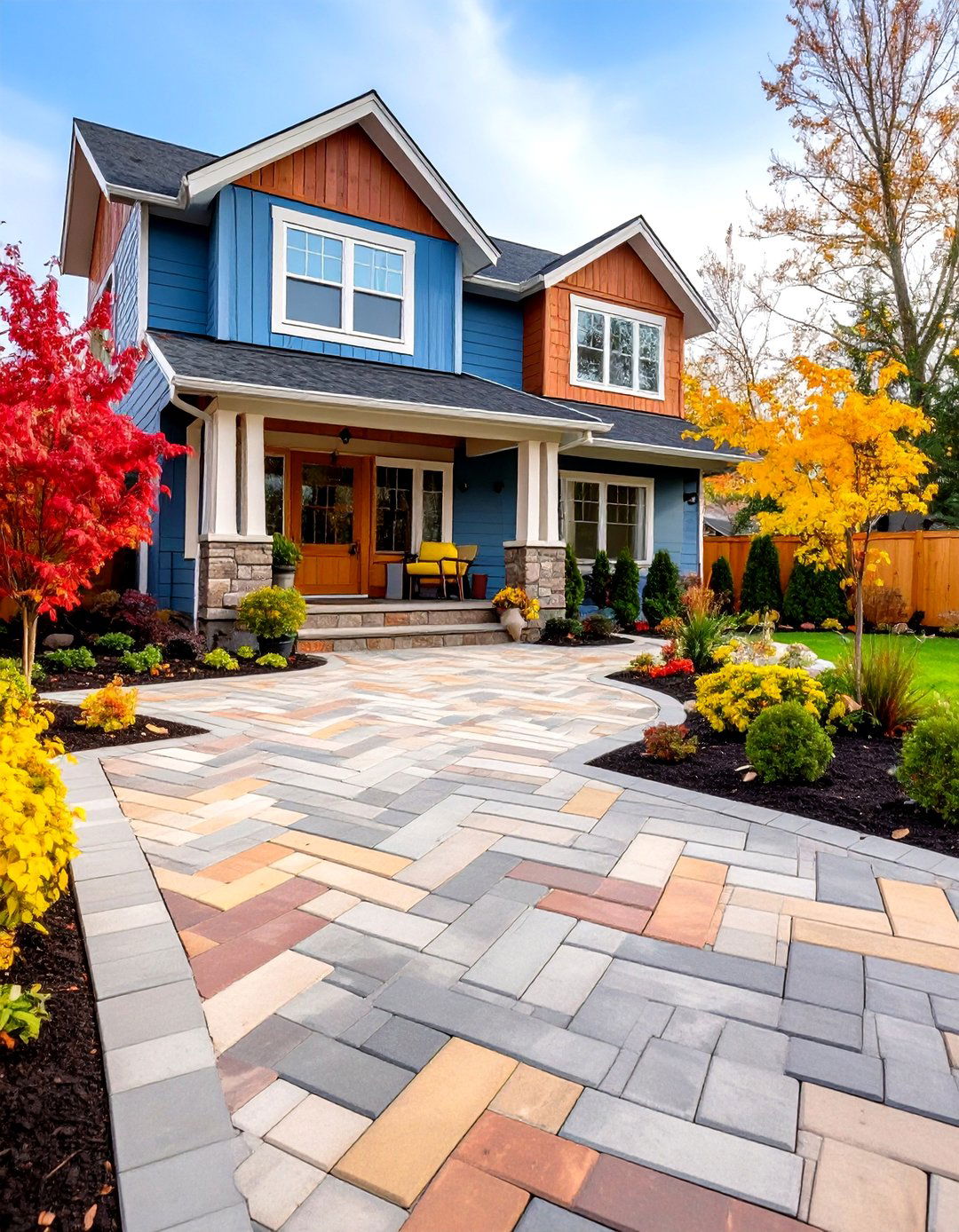
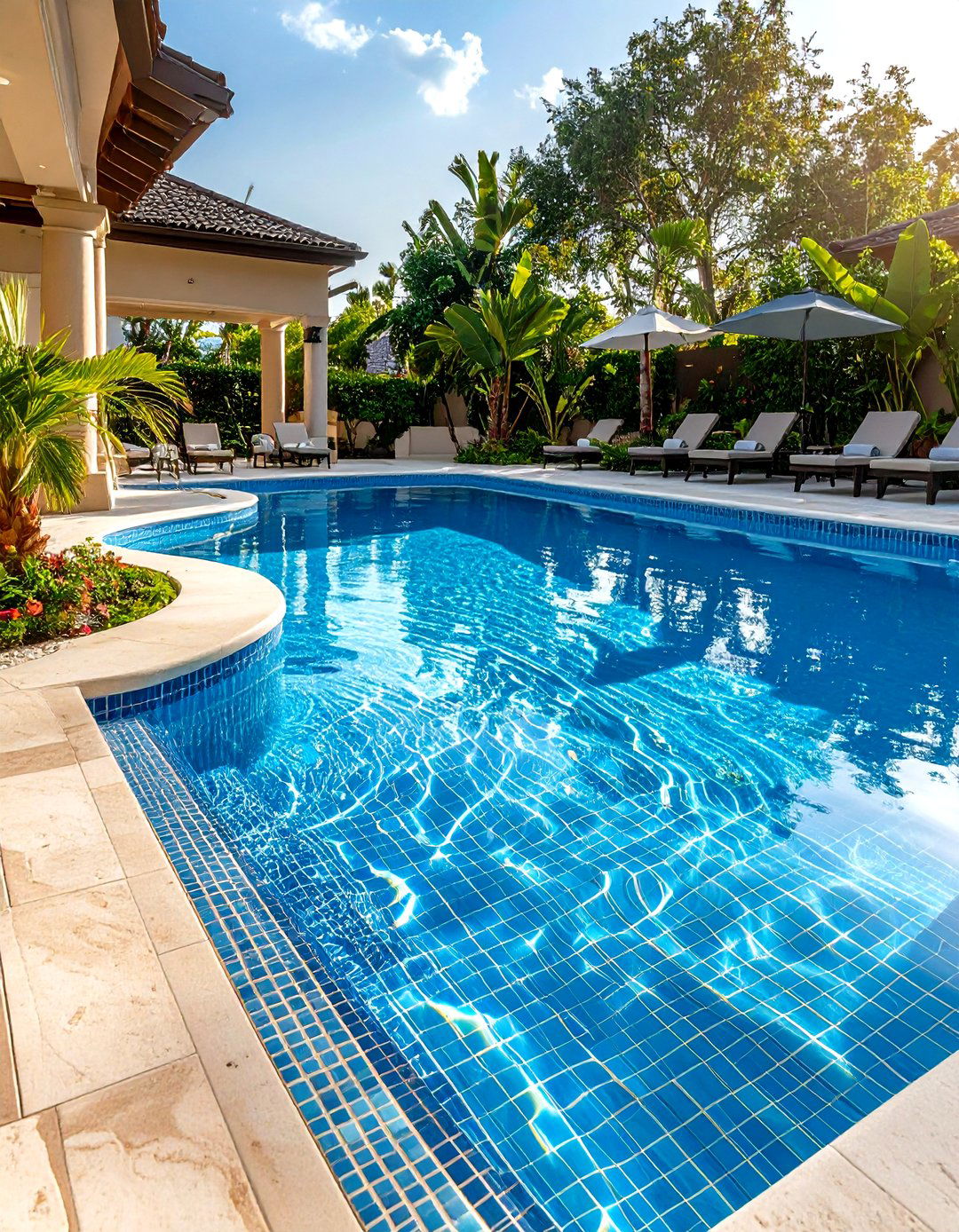
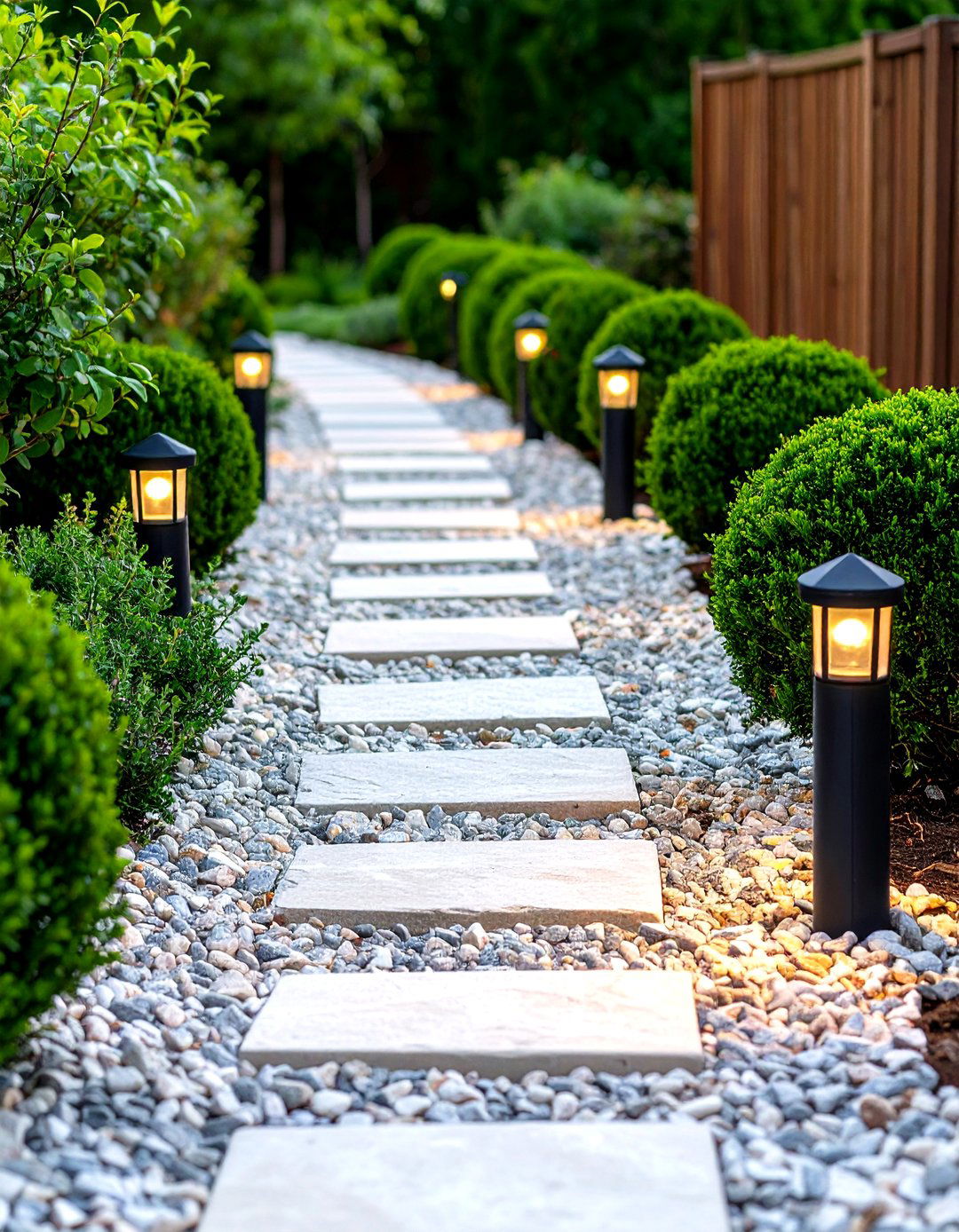

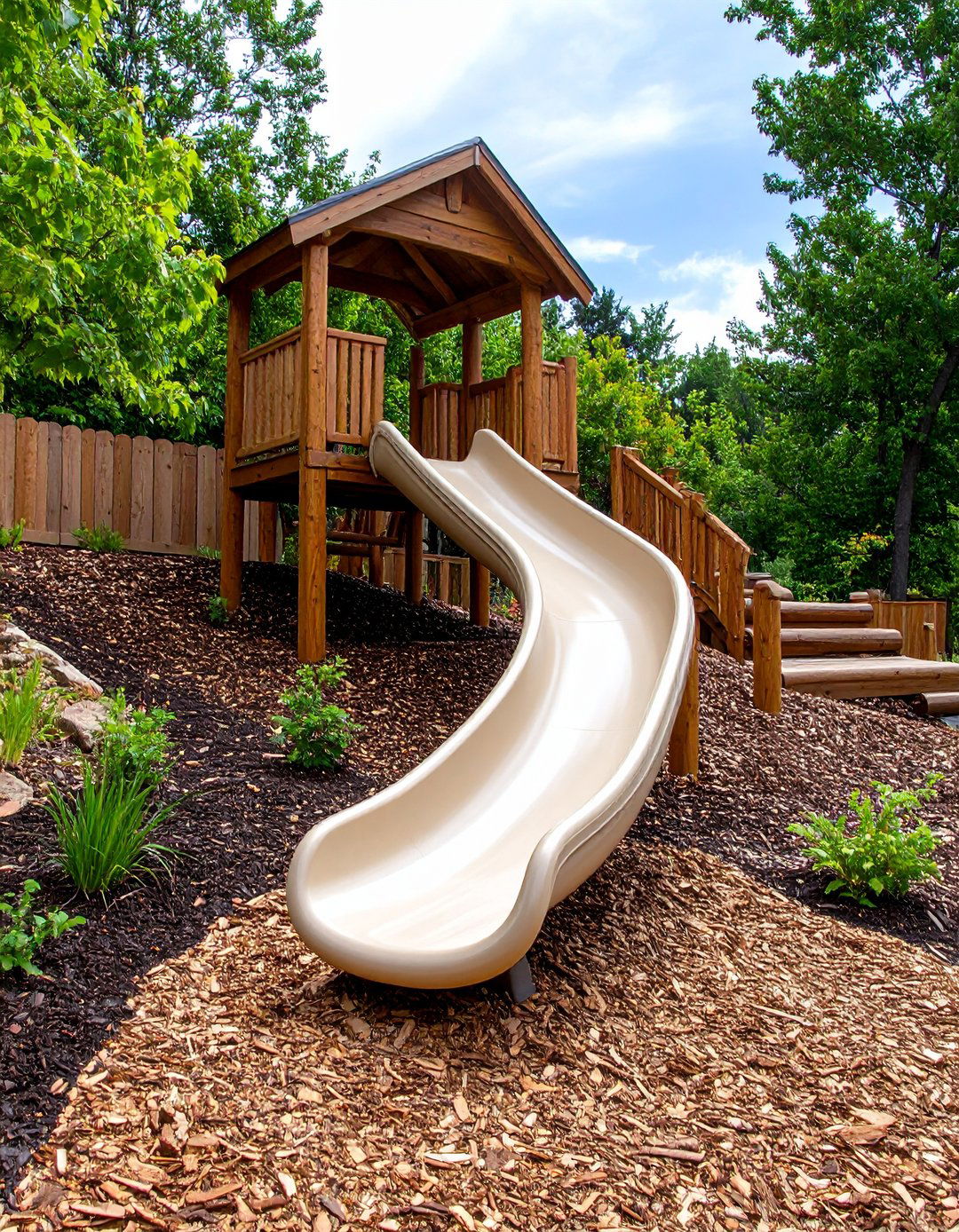
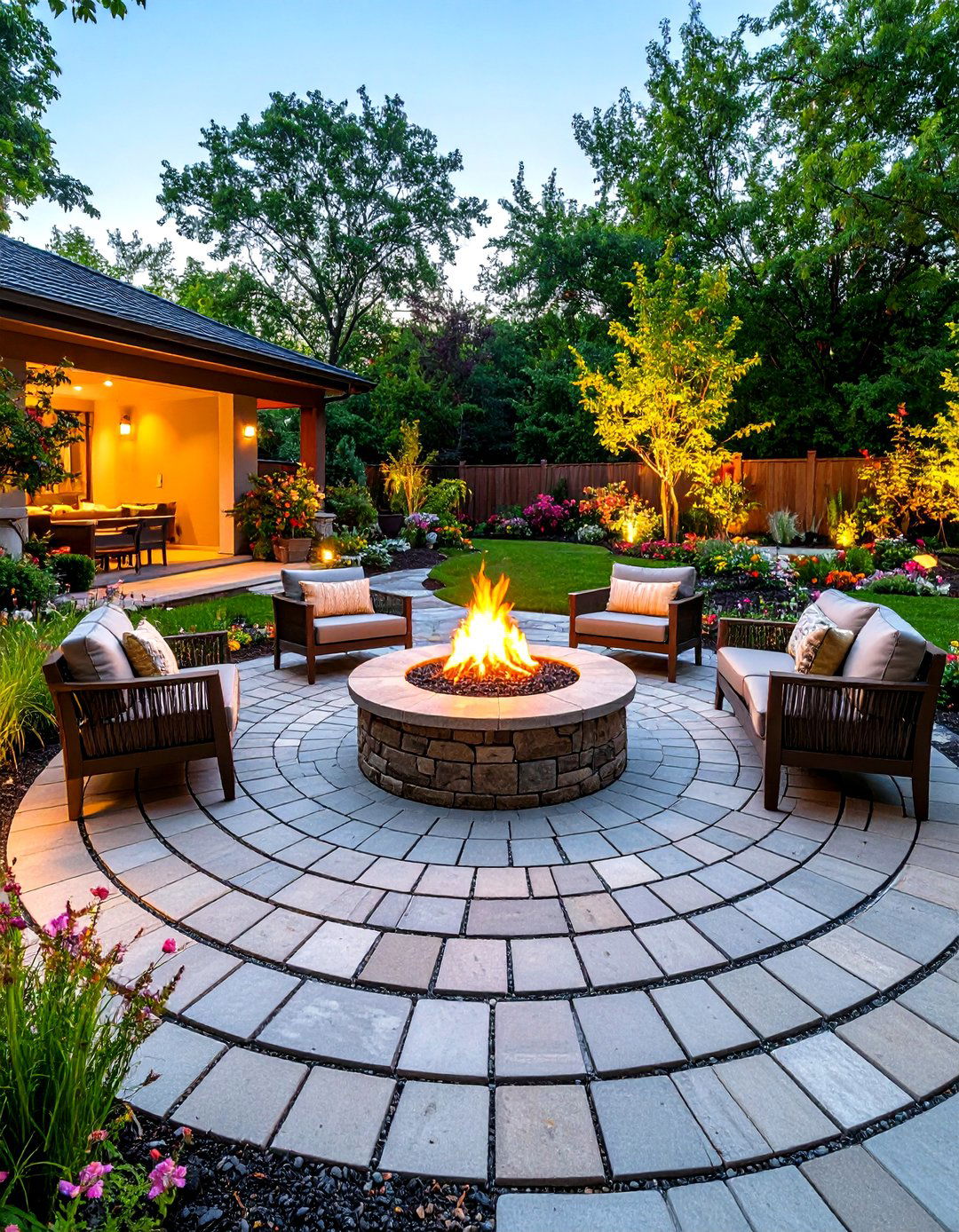




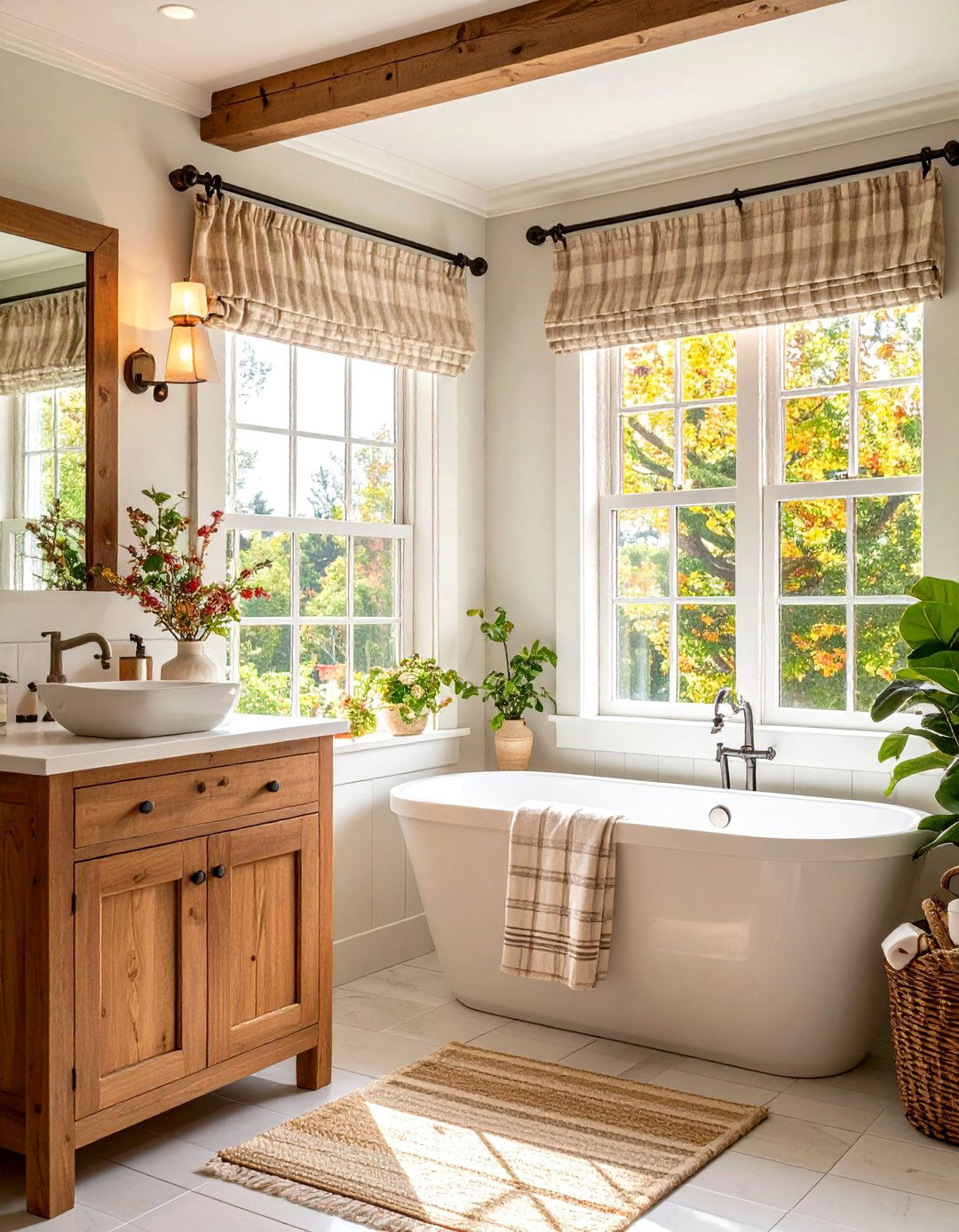
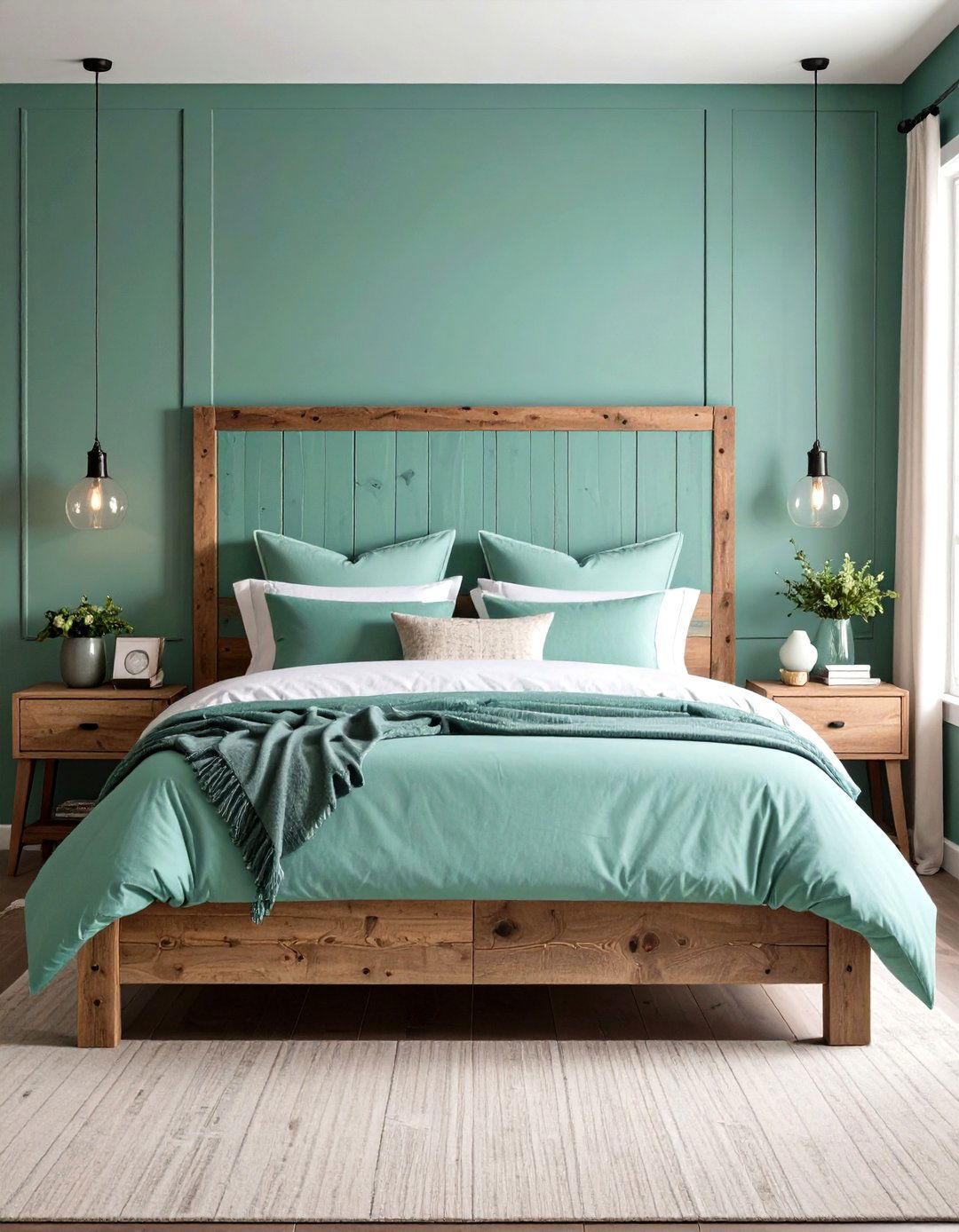
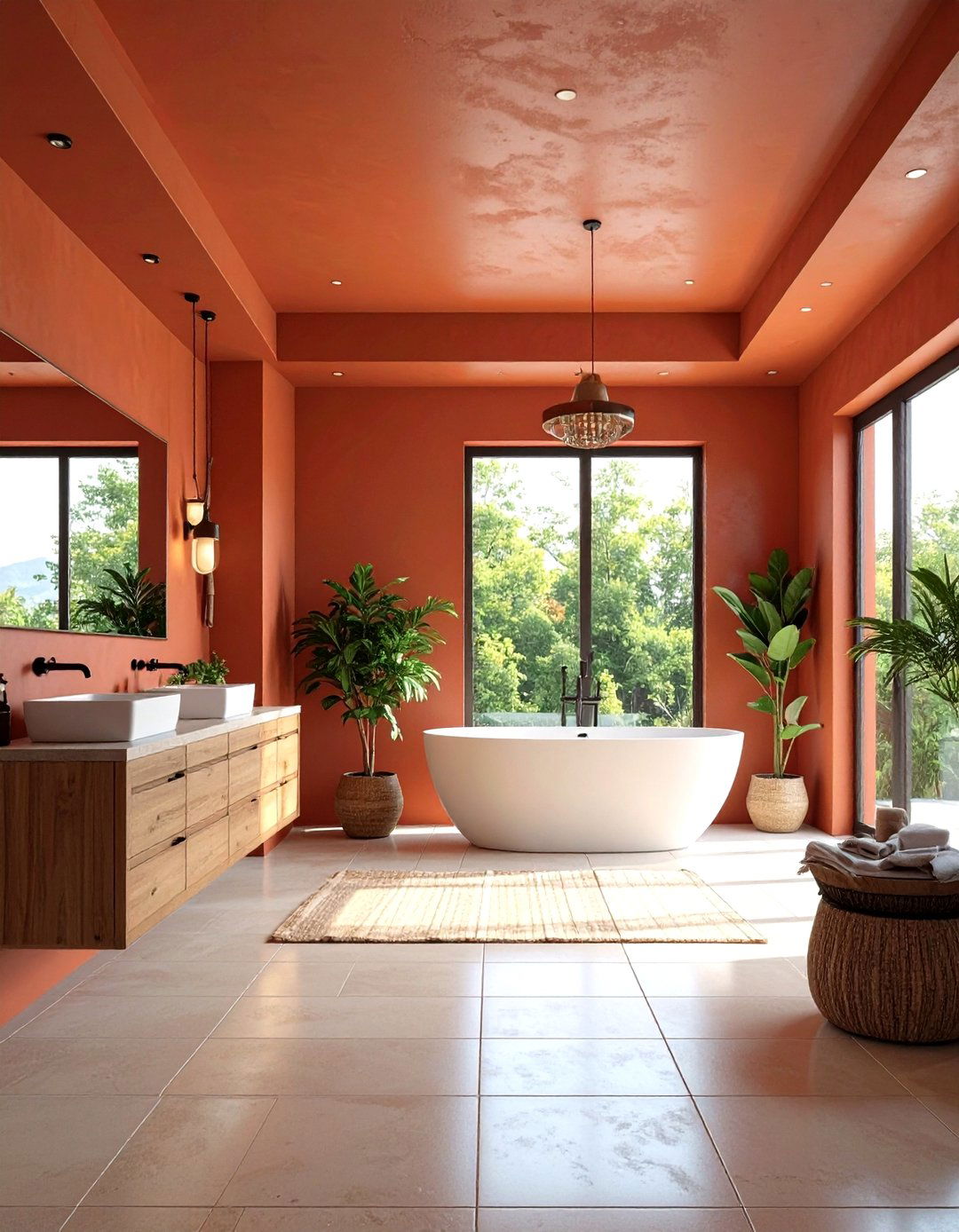

Leave a Reply